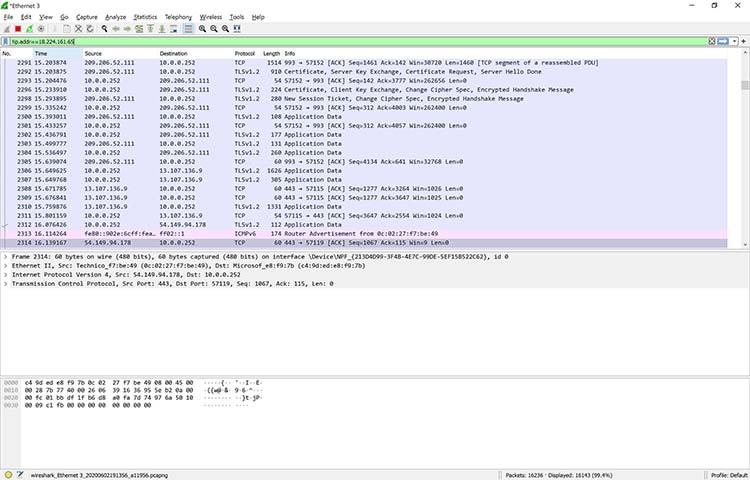

Capture Packets with Tshark tshark -i wlan0 -w capture-output.pcap Read a Pcap with Tshark tshark -r capture-output.pcap HTTP Analysis with Tshark Specified in the corresponding Arch Linux package.Use these as the basis for starting to build extraction commands.The syntax for capturing and reading a pcap is very similar to tcpdump.
#Wireshark filter by source ip manual
License, except for the contents of the manual pages, which have their own license The website is available under the terms of the GPL-3.0 Using mandoc for the conversion of manual pages.

Package information: Package name: community/wireshark-cli Version: 4.0.5-1 Upstream: Licenses: GPL2 Manuals: /listing/community/wireshark-cli/ Table of contents See the list of authors in the Wireshark man page for a See the manual page of pcap-filter(7) or, if that doesn’tĮxist, tcpdump(8), or, if that doesn’t exist, for aĭisplay Filters are also described in the User’s Guide: This manpage does not describe the capture filter syntax, which isĭifferent. Regular expressions in the "matches" operator are

The wireshark-filter(4) manpage is part of the Packets to address 224.1.2.3, then using: If, for example, you want to filter out all IP multicast The third filter expression includes the constraint that offsetġ99 in the frame exists, in other words the length of the frame is at leastĮach comparison has an implicit exists test for any field value.Ĭare must be taken when using the display filter to remove noise from the Not exist" and hence will match all packets that do not contain the llc Packets where not exists llc", or in other words "where llc does The second filter expression means "show me the Tcp.port exists and equals 80, and ip.src exists and equalsġ92.168.2.1". This means that theįirst filter expression must be read as "show me the packets for which "exists" operator has the highest priority. Remember that whenever a protocol or field name occurs in anĮxpression, the "exists" operator is implicitly called. The comparison operators can be expressed either throughĮnglish-like abbreviations or through C-like symbols: Semantically equivalent to the sequence of bytes that it spans, not itsĭisplayed text in the protocol tree. The value of a field is not necessarily what appears in the With comparable values (which may be literals, other fields, or function In a filter, an exists operator for that protocol or field implicitlyĮach field has a value, and that value can be used in operations Whenever a protocol or field appears as the argument of a function To see all packets that contain a Token-Ring RIF field, use Protocol, the filter would be "ip" (without the quotation marks). If you want to see all packets which contain the IP The simplest filter allows you to check for the existence of a FILTER SYNTAX Check whether a field or protocol exists Reference of filter fields can be found within Wireshark and in the displayįilter reference at. Generation and packet list colorization (the latter is only available to Let you compare the fields within a protocol against a specific value,Ĭompare fields against fields, and check the existence of specified fieldsįilters are also used by other features such as statistics Your filter, then it is displayed in the list of packets. If a packet meets the requirements expressed in That helps remove the noise from a packet trace and lets you see only the Wireshark and TShark share a powerful filter engine Wireshark [ -Y "display filterĮxpression" | -display-filter "display filter Wireshark-filter - Wireshark display filter syntax and


 0 kommentar(er)
0 kommentar(er)
